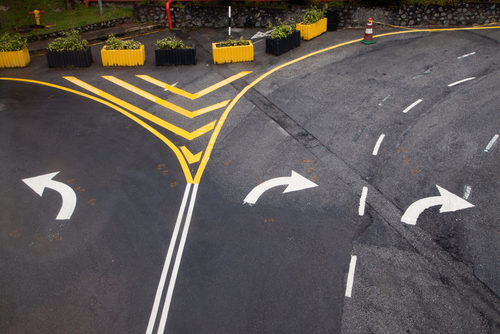Adaptive Learning: What Is It And What Does It Mean For Your Learners
Recently, workplace learning expert Donald Taylor released the results of his annual L&D Global Sentiment Survey. In that survey, Taylor asked 885 people from 60 countries one single question: “What will be hot in workplace L&D in 2017?”
The top answer, beating out social learning, micro-learning, and augmented reality, was personalized and adaptive delivery of learning.
Taylor’s survey was specifically about 2017, but adaptive learning has been hot for a few years. Time wrote about the adaptive learning revolution back in 2013, the same year the Gates Foundation funded a generation of companies that make adaptive courseware. All of that happened in the education world: K-12 and college.
Adaptive learning didn’t stay in school; since 2013, adaptive has been making its way into L&D, where it helps companies serve personalized training to employees and other learners.
But first, what is adaptive learning?
Adaptive learning, at its most basic, is learning that adapts to the learner.
Think of your standard, online, self-paced course. Learners log in to your learning platform, watch a video or read some information, and then answer questions about what they’ve learned. If they get the question right, they move forward. If not, maybe the learning platform asks them to review the information and try again.
Everyone who takes that course gets the same experience. They see the same video and answer the same questions in the same order.
Adaptive learning changes that formula. Learners in an adaptive course might all start with the same video or information, but based on their answers, the platform feeds them different content and questions.
If, for example, they don’t get the right answer on the first question, the platform may give them a more basic lesson next, to give them background that maybe they don’t have. If they do very well and the questions don’t seem to be challenging them, the platform may give the learner more advanced information.
Is adaptive learning personalized learning?
It’s easy to confuse adaptive learning with personalized learning, and in fact the two terms are often used interchangeably. It makes sense: if learning adapts to the learner, it’s personalized, right? Technically, however, that is not the case.
There are many ways to personalize learning: an instructor in an in-person training may, for example, differentiate instruction to reach every learner in a course. The trainer may use assignments tailored to a learner’s background, or offer examples based on a learner’s expertise. That is a form of personalized learning.
According to Adam Newman of Tyton Partners, an education-focused consulting firm, personalized learning is an umbrella term.
“It’s a way in which learning is modified, adjusted or customized to meet an individual learner’s needs and objectives that does not depend on adaptivity,” Newman said of personalized learning in an article in Campus Technology. “So you can think of adaptive learning models as one approach along a spectrum that enables personalization.”
Adaptive learning — machine learning that tailors itself to the learner based on their progress through course content and provides resources to learners when they appear to need them most — falls under the personalized learning umbrella.
What does adaptive learning look like?
One of the most common ways of creating adaptive learning is by building branched content, or content that doesn’t follow one path only.
Think of a course as a road. The typical self-paced course I mentioned at the start of this post is a straight road with no turnings. Anyone on that road travels it the same way, from start to finish.
An adaptive course that uses branched content takes each learner through the content of a course differently, based on each learner’s interaction with the course material. Learners might skip content they’re already well-versed in. They might cover certain things first and other things later. They might get more practice on a skill they’re struggling with. Well-designed adaptive learning presents information to a learner when the learner needs it.
In some cases, this extends beyond the course or module. Augmented Intelligence (IA), such as a chatbot, can also deliver a form of adaptive learning. That can be as simple as a chatbot in a learning platform (like Litmos Lenny) seeing where the holes in an employee’s training are.
For example, an e-learning chatbot can suggest relevant courses that a learner hasn’t yet taken or required courses that haven’t been completed.
Chatbots can also deliver adaptive learning on their own, talking an employee through a skill, answering specific questions, or reminding learners to use a skill they learned in a course recently. A chatbot’s ability to respond to a learner’s specific needs makes it a sort of robotic tutor.
Why not just stick with the traditional self-paced course?
Every learner is different, and sometimes co-workers at the same company, who need to learn the same information, come from very different backgrounds.
Take the example of Dine Aware. This company’s mission is to educate employees in the food industry about how to manage and interact with customers who have food allergies or intolerance. Restaurants employ a variety of workers, all of whom deal with the public, and who come from vastly different educational and language backgrounds. Adaptive learning serves learning in a way that’s digestible to every employee; (forgive the pun).
Of course, there’s nothing wrong with a linear, self-paced course. Sometimes everyone really does need to consume the same information in the same way — a compliance course taken by everyone in one department, for example.
Adaptive learning allows L&D to teach everyone the information they need to know in a way that works for them.
For more on this subject, download this whitepaper: Adaptive Learning Demystified.






